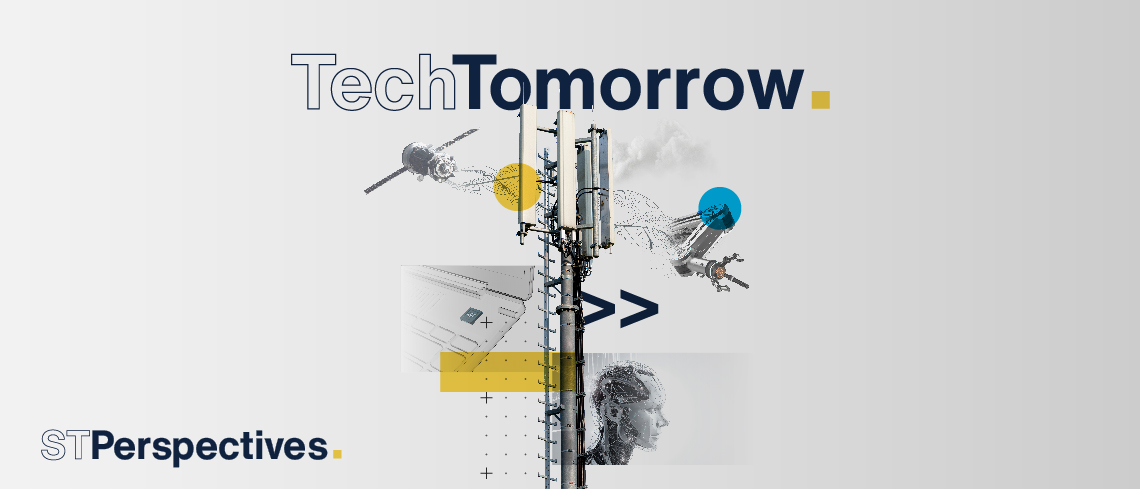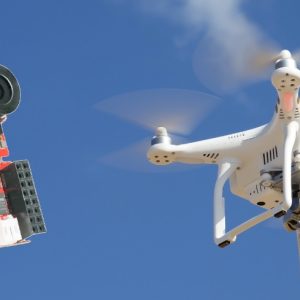The global flow of data is already at unprecedented levels, and the foundations are being laid for a new era of hyper-connectivity in the next five-10 years. This article explores three crucial predictions for ushering-in this new era – the continued growth of cloud-based services, harnessing the potential of edge AI, and developments in the sophistication and reach of WiFi.
Connecting to the cloud
Despite its ethereal name, the physical “cloud” has largely become the de facto architecture for the delivery of IT services. Clouds (or, rather, their physical embodiment – data centers) are made up of tens, hundreds, or thousands of servers. They can be public or private. Many well-known cloud providers offer access to public clouds – computing resources and applications made available to any paying customer, whether an individual or an organization. Conversely, private clouds are those collections of servers owned by individual organizations and only accessible to their own employees and authorized partners.
Both private and public cloud servers need reliable and secure connections. This is the case when billions of increasingly smart devices – the so-called Internet of Things (IoT) – are being connected to the cloud. The “how” of the connection between devices and clouds is largely invisible to the user. Typically, terrestrial telecoms networks, undersea cables and, increasingly, satellite communications combine to provide the connection. The appropriate “mix” will depend on whether the requirement is to connect across a relatively short distance within a single site, or between resources located thousands of miles apart.
Within data centers themselves – and particularly those powering AI – the need to transfer huge volumes of data between servers is driving innovation in physical connectivity. Chief among these innovations is the emergence of optical interconnections based on silicon photonics, which will support the emerging need for 800Gb/s and 1.6Tb/s optical interconnects. 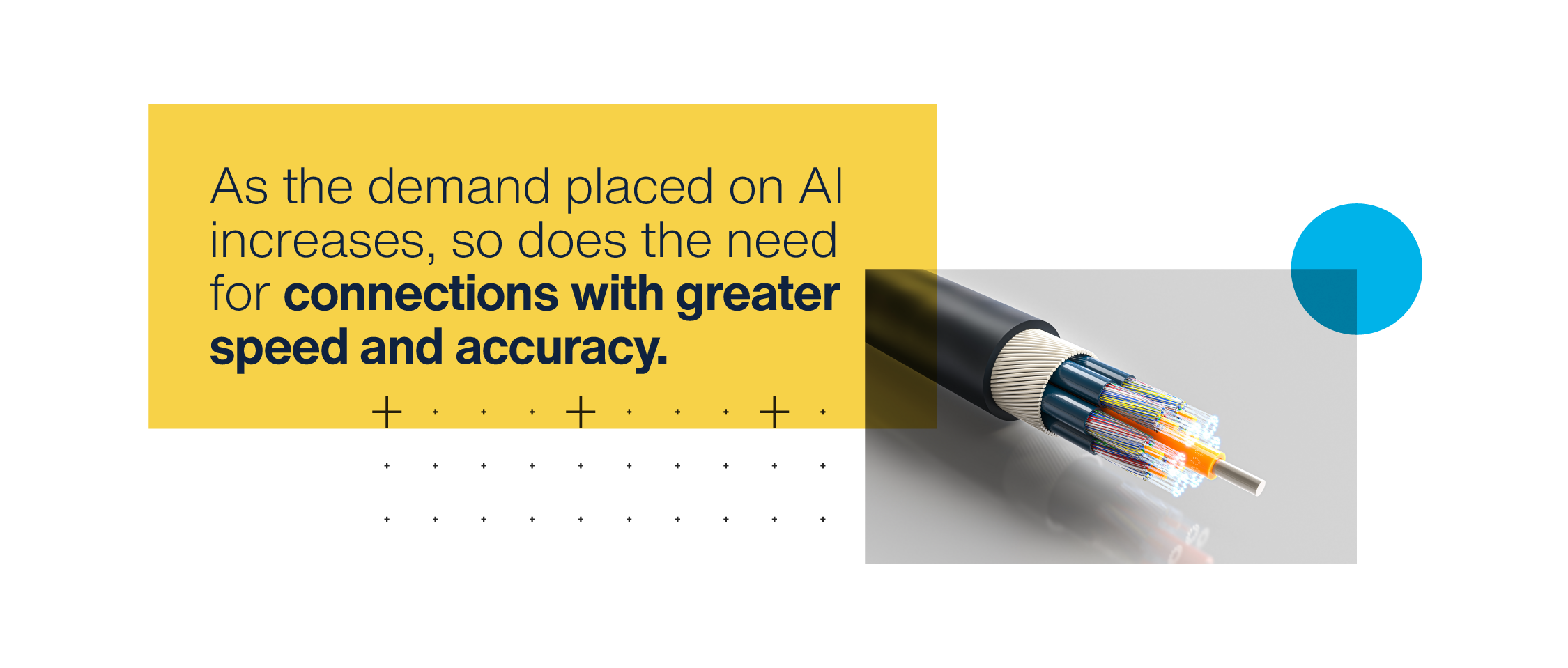
The growth of artificial intelligence (AI) has, of course, heightened the need for connections with greater bandwidth and lower latency than ever before. The processing required for AI– particularly generative AI – has largely been provided by data centers so far. As the demands placed on AI increase, so too does the need for connections with greater speed and accuracy. That said, other AI technologies are helping to ease the burden on the network.
Moving AI to the edge
Edge computing places more data processing and analytics within devices themselves, closer to the sources of data. The principle has several notable advantages, particularly as recent progress in AI has enabled the creation of optimized “tiny” AI models that can run on smaller semiconductors within microcontrollers (MCUs) and sensors.
These advances point to a potential revolution in the ability to build “intelligence” into consumer and industrial devices, and to easily connect wirelessly to communications networks. The applications of edge AI are extensive, ranging from smart public infrastructure, like the sensors necessary for connected cities, to remote health monitoring via non-invasive wearable devices, to numerous industrial applications.
Edge AI processing algorithms are generally much smaller and more power efficient than cloud-based models, delivering an additional benefit in reduced energy consumption when AI inference takes place in a device versus a data center. 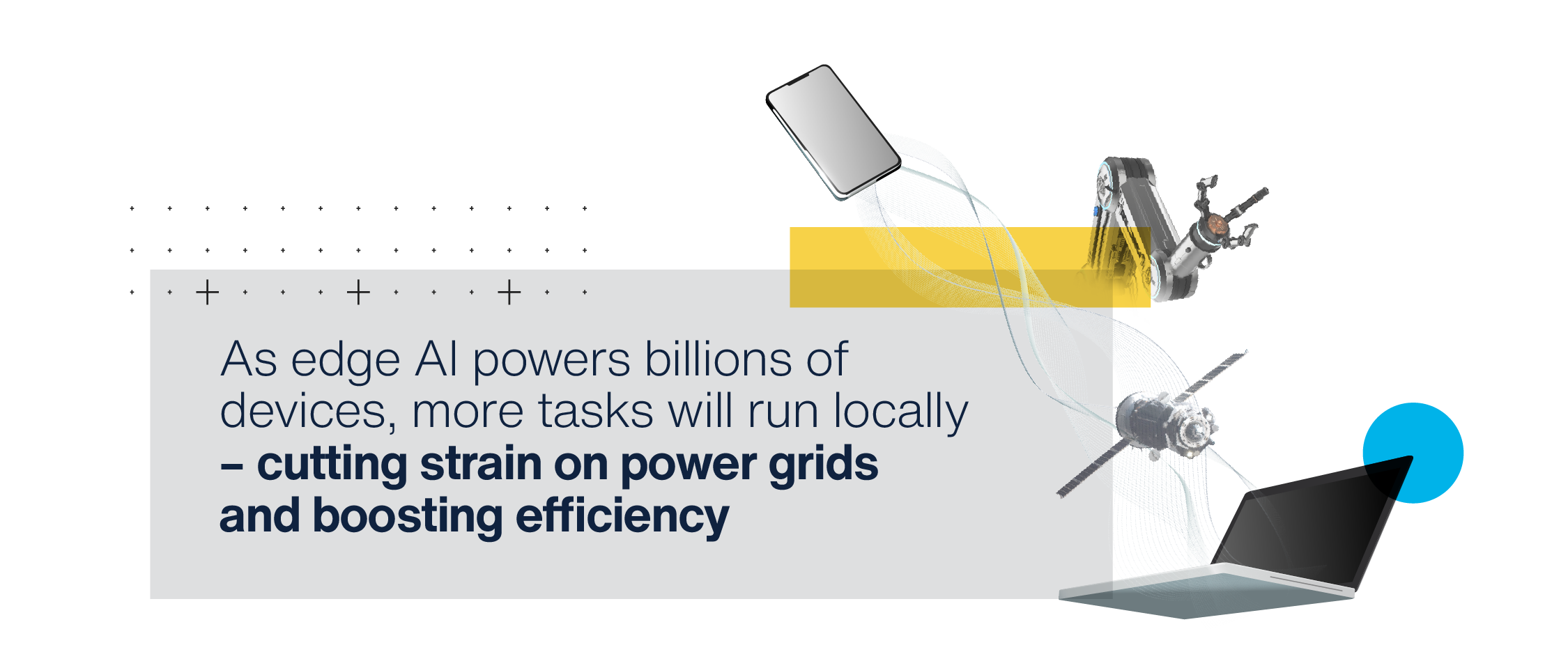
Edge AI solutions enable devices to perform inferences locally, reducing the need to send vast amounts of data to the cloud. These systems minimize bandwidth usage and lower energy consumption by transmitting only relevant data. With edge AI built into billions of connected devices, more inference tasks will be handled locally, reducing strain on the global power grid.
More processing power at the edge doesn’t lessen the need for efficient connections between edge AI-enabled devices and other connected infrastructure, even when the amount of data being transmitted is reduced. Many of the benefits of the insights created at the edge will be maximized through their communication to other devices and services. A connected, edge AI-enabled industrial monitoring device could detect, for instance, a piece of machinery operating beyond a temperature threshold and prompt both automatic remedial action and alert service engineers. More intelligent devices are useful in isolation, but when connected to other services and systems, their impact is multiplied.
Evolution of WiFi
WiFi has consistently delivered high-speed connectivity in local networks – homes, businesses, and public spaces – and its capabilities are continually being enhanced. Many modern WiFi devices are using WiFi 6, which in ideal situations delivers data transfer speeds of up to 9 gigabits per second (Gbps). WiFi 6 is also designed to efficiently manage networks with multiple connected devices, dividing channels into sub-channels to serve multiple devices simultaneously. This reduces latency and supports up to eight simultaneous streams for better performance in particularly crowded networks.
WiFi 7 became available in 2024. WiFi 7 represents a transformation in network performance, where devices share huge amounts of data. Supporting theoretical data transfer speeds of up to 46 Gbps (up to 5x more than WiFi 6), further data capacity is enabled through WiFi 7’s support for 320 MHz channels.
In simple terms, WiFi 7 will support environments where continuous streaming of large amounts of data in real-time is required. Its potential in so-called smart cities is cited as a key opportunity, where sharing data between thousands of connected devices and sensors will underpin urban services, citizen safety, and creating a better quality of life for residents. While WiFi will continue to play a central role in connectivity within homes, businesses, and across cities, the need to connect devices and data across much longer distances will require integration with terrestrial and orbital telecoms networks.
The road to 6G
5G saw a jump in wide area network capacity and (though still a little way off) 6G will provide the next major leap forward. While we’re familiar with cellular connections for devices such as mobile phones, laptops, and tablets, an increasing number of connected devices across the IoT feature embedded cellular capabilities. This direct connection to the next generation of telecoms networks will be transformational. 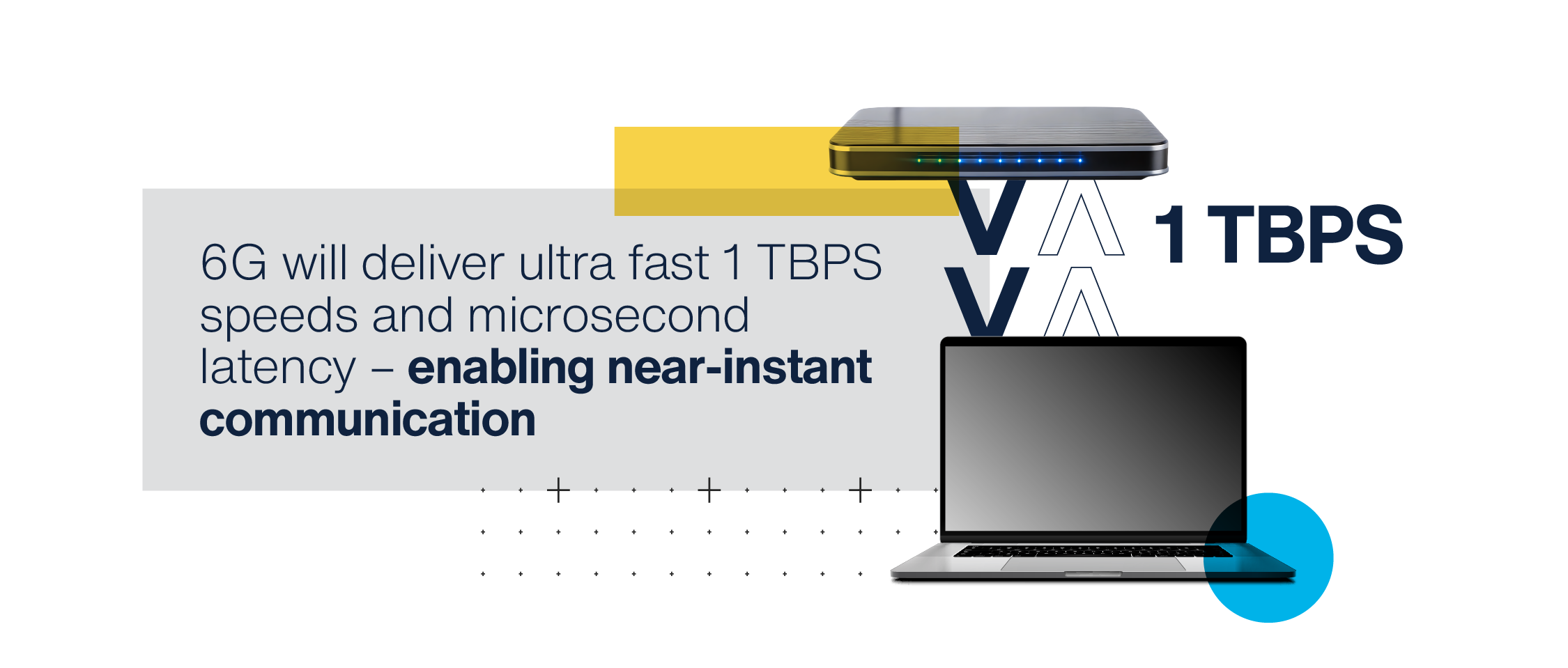
Commercial deployment of 6G is expected sometime around 2030. 6G networks promise higher bandwidth than 5G with data rates of up to 1 terabit per second (Tbps) and is likely to be operating in terahertz (THz) frequency bands. Latency is expected to be in the range of microseconds rather than milliseconds, enabling near-instantaneous communication. These improvements can be critical for autonomous vehicles, healthcare, and robotics. 6G will expand the number of devices that can connect simultaneously and support millions of edge AI-enabled devices and sensors.
The future – a jump to mega constellations?
We stand at the precipice of a hyper-connected future. Technological evolution points toward a world where seamless, intelligent connectivity is an expectation rather than a luxury. The continued rise of cloud computing, expansion of edge AI and development of high-bandwidth, low latency networks like 6G will drive new possibilities – from real-time automation in various industries, to smart cities that dynamically respond to human needs. 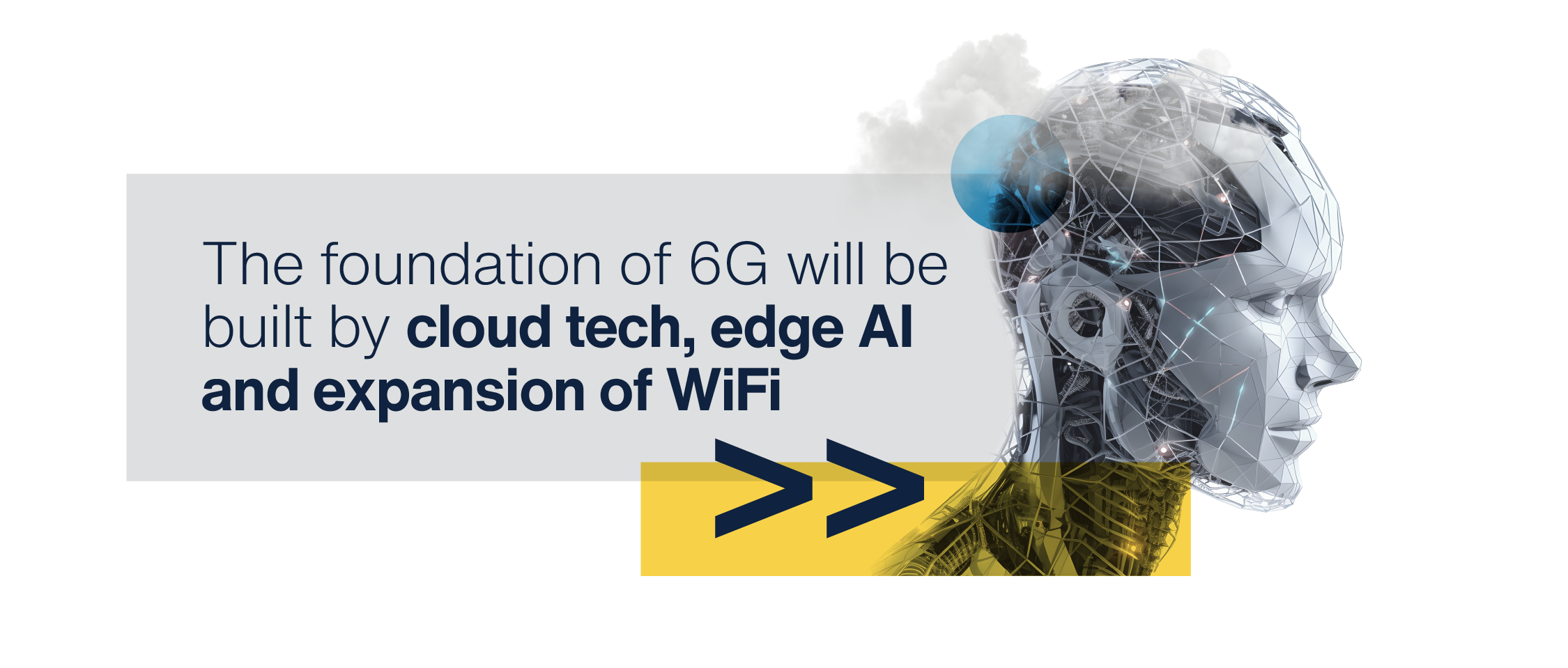
A genuine paradigm shift may come from the fusion of terrestrial and space-based networks. Mega-constellations of satellites will extend connectivity to the far corners of the earth. In this future, the lines between the digital and physical worlds will blur even further, with AI-driven devices seamlessly switching between connectivity modes to ensure uninterrupted access to the cloud. The challenges ahead will not simply be about expanding the networks but ensuring that they remain secure, sustainable and inclusive to build a connected, more equitable world.
- Discover more on STM32 Cloud Solutions
- Take a look at STM32N6 series


